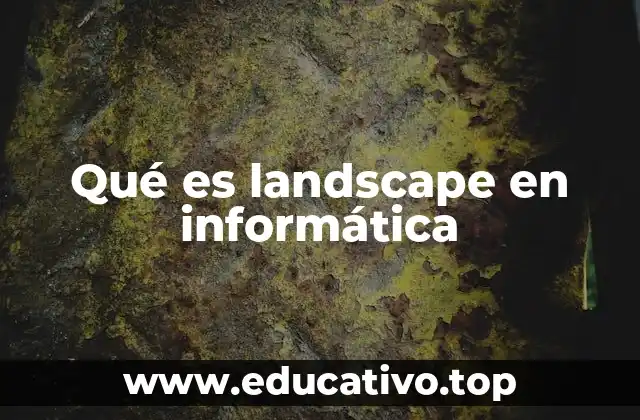Introducción a Describing a Landscape in English
Describing a landscape in English is an essential skill for anyone looking to improve their language skills, whether it’s for travel, creative writing, or simply to appreciate the beauty of nature. Being able to accurately and vividly describe a landscape can transport your audience to a new location, evoke emotions, and create a sense of wonder. In this article, we’ll explore the importance of describing a landscape in English, and provide you with examples, tips, and techniques to help you master this skill.
Why is Describing a Landscape in English Important?
Describing a landscape in English is important for several reasons. Firstly, it allows you to communicate effectively with others about the beauty of a place, sharing your experiences and emotions with them. Secondly, it helps to develop your vocabulary and grammar skills, enabling you to express complex ideas and feelings in a more nuanced way. Finally, it’s a great way to practice creative writing, encouraging you to think critically and imaginatively about the world around you.
What Makes a Good Landscape Description in English?
A good landscape description in English should be vivid, engaging, and evocative. It should use sensory language to describe what you see, hear, smell, taste, and feel, transporting your audience to the scene. It should also use figurative language, such as metaphors, similes, and personification, to add depth and complexity to your description. Additionally, a good landscape description should be well-structured, with a clear introduction, body, and conclusion, and should use transitional phrases to guide the reader through the text.
How to Describe a Landscape in English – Tips and Techniques
So, how do you go about describing a landscape in English? Here are some tips and techniques to get you started:
- Use descriptive adjectives to describe the scenery, such as breathtaking, serene, rugged, and Picturesque.
- Use verbs to describe the actions of the natural world, such as the sun rises, the wind whispers, and the river flows.
- Use sensory language to describe what you see, hear, smell, taste, and feel, such as the sweet scent of blooming flowers or the sound of birds chirping in the trees.
- Use figurative language to add depth and complexity to your description, such as the mountains towered above us like giants or the lake shimmered like a diamond in the sunlight.
Examples of Landscape Descriptions in English
Here are some examples of landscape descriptions in English to inspire you:
- The Grand Canyon was a breathtaking sight, with its vast expanse of red rock stretching out as far as the eye could see. The Colorado River snaked its way through the valley, its gentle flow a soothing soundtrack to the majestic scenery. (Describing the Grand Canyon)
- The rolling hills of Tuscany were a picturesque backdrop to our summer vacation. The sun-kissed vineyards and cypress trees seemed to stretch on forever, their tranquil beauty a balm to our souls. (Describing the Tuscan countryside)
- The rugged coastline of Big Sur was a dramatic sight, with its towering cliffs and hidden coves. The sound of the waves crashing against the shore was like music to our ears, washing away our worries and leaving us feeling refreshed and renewed. (Describing Big Sur)
How to Describe a Landscape in English – Common Mistakes to Avoid
When describing a landscape in English, there are several common mistakes to avoid. These include:
- Using clichés or overused phrases, such as the beautiful sunset or the stunning view.
- Failing to use sensory language, leaving the reader with a vague and unengaging description.
- Using overly complex language or jargon, which can alienate or confuse your audience.
- Failing to structure your description in a clear and logical way, making it difficult for the reader to follow.
Describing a Landscape in English – Using Figurative Language
Figurative language is a powerful tool when it comes to describing a landscape in English. Here are some examples of how to use it:
- Metaphors: The city was a beast, devouring our senses with its bright lights and loud noises.
- Similes: The mountain was like a giant, towering above us with its rugged peaks and snow-capped summit.
- Personification: The wind whispered secrets in our ears, its gentle touch a soothing balm to our souls.
- Hyperbole: The lake was so still, it seemed like a mirror, reflecting the beauty of the surrounding landscape with perfect clarity.
Describing a Landscape in English – Using Sensory Language
Sensory language is essential when it comes to describing a landscape in English. Here are some examples of how to use it:
- Sight: The vibrant colors of the sunset danced across the sky, a kaleidoscope of pinks, oranges, and purples.
- Sound: The sound of the river flowing through the valley was like music to our ears, a soothing melody that calmed our souls.
- Smell: The sweet scent of blooming flowers filled the air, transporting us to a world of beauty and tranquility.
- Touch: The rough texture of the rock face was a tactile delight, a sensory experience that left us feeling invigorated and refreshed.
- Taste: The fresh air was like a refreshing drink, quenching our thirst for adventure and exploration.
Can You Describe a Landscape in English Without Using Clichés?
One of the biggest challenges when describing a landscape in English is avoiding clichés and overused phrases. Here are some tips to help you:
- Use fresh and original language to describe the scene.
- Avoid using phrases that have been used many times before, such as the beautiful sunset or the stunning view.
- Use figurative language to add depth and complexity to your description.
- Use sensory language to engage the reader’s senses and create a more immersive experience.
How Long Should a Landscape Description in English Be?
The length of a landscape description in English will depend on the context and purpose of the text. Here are some general guidelines:
- A short descriptive paragraph should be around 50-100 words.
- A longer, more detailed description should be around 200-500 words.
- A creative writing piece or poem can be any length, but should be guided by the needs of the narrative or theme.
Can You Describe a Landscape in English Without Using Adjectives?
While adjectives are often used to describe a landscape in English, it is possible to create a vivid and engaging description without them. Here are some tips:
- Use verbs to describe the actions of the natural world, such as the sun rises or the wind whispers.
- Use nouns to describe the objects and features of the landscape, such as the mountain or the river.
- Use figurative language to add depth and complexity to your description, such as the mountains towered above us like giants or the lake shimmered like a diamond in the sunlight.
How Do You Describe a Landscape in English to a Non-Native Speaker?
When describing a landscape in English to a non-native speaker, it’s essential to consider their level of language proficiency and cultural background. Here are some tips:
- Use simple and clear language to describe the scene.
- Avoid using idioms, colloquialisms, or culturally-specific references that may be unfamiliar to the listener.
- Use visual aids, such as pictures or diagrams, to help illustrate the description.
- Focus on concrete, tangible details, rather than abstract concepts or emotions.
Can You Describe a Landscape in English Using Only One Sense?
While it’s common to use multiple senses when describing a landscape in English, it’s also possible to create a vivid and engaging description using only one sense. Here are some examples:
- Sight: The vibrant colors of the sunset danced across the sky, a kaleidoscope of pinks, oranges, and purples.
- Sound: The sound of the river flowing through the valley was like music to our ears, a soothing melody that calmed our souls.
- Smell: The sweet scent of blooming flowers filled the air, transporting us to a world of beauty and tranquility.
How Do You Describe a Landscape in English to a Blind Person?
When describing a landscape in English to a blind person, it’s essential to focus on the senses of sound, touch, and smell. Here are some tips:
- Use descriptive language to describe the sounds of the landscape, such as the sound of birds chirping in the trees or the rustling of leaves in the wind.
- Use tactile language to describe the textures and sensations of the landscape, such as the rough texture of the rock face or the softness of the grass beneath our feet.
- Use olfactory language to describe the smells of the landscape, such as the sweet scent of blooming flowers or the earthy smell of the forest floor.
Can You Describe a Landscape in English in a Humorous Way?
While landscape descriptions are often serious and poetic, it’s also possible to create a humorous and lighthearted description. Here are some examples:
- The landscape was so breathtaking, I forgot to breathe. Luckily, my lungs are still intact, but my jaw is still on the floor.
- The mountains were so tall, I had to crane my neck just to see the top. I’m pretty sure I heard my neck crack, but it was worth it.
How Do You Describe a Landscape in English in a Creative Writing Piece?
When describing a landscape in English in a creative writing piece, the possibilities are endless. Here are some tips:
- Use vivid and imaginative language to create a sense of atmosphere and mood.
- Use figurative language, such as metaphors and similes, to add depth and complexity to your description.
- Use sensory language to engage the reader’s senses and create a more immersive experience.
- Experiment with different narrative structures and styles, such as stream-of-consciousness or fragmented narrative.
Sofía es una periodista e investigadora con un enfoque en el periodismo de servicio. Investiga y escribe sobre una amplia gama de temas, desde finanzas personales hasta bienestar y cultura general, con un enfoque en la información verificada.
INDICE









